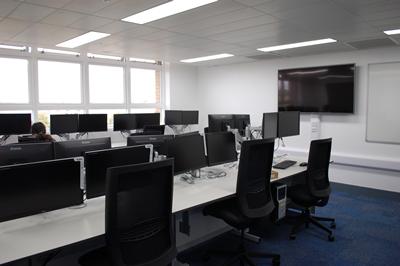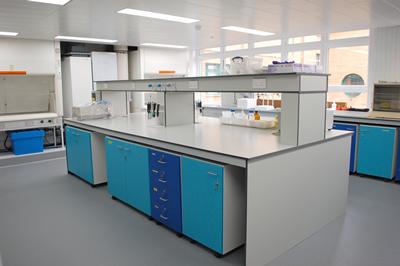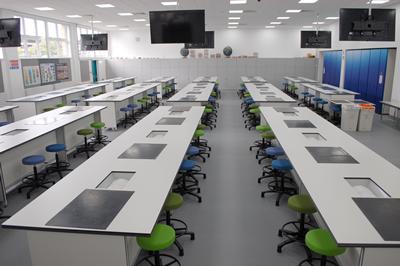Impressive new laboratories will inspire Ocean and Earth Science students

Ocean and Earth Science students embarking on their degrees this autumn are among the first to use state-of-the-art teaching laboratories at the National Oceanography Centre Southampton (NOCS), the home of the University of Southampton’s Waterfront Campus.

More than £2million has been invested in upgrading four teaching laboratories at NOCS. Sophisticated information technology in the largest labs give every student close-up views of experimental activities and new scientific equipment ensures undergraduates get a flying start to their academic life. In addition, lectures can now be easily recorded and made available online so students can review them afterwards; lectures can also be streamed live to external audiences at other campuses and beyond.

Up to 150 students can use the new light and spacious Main Teaching Laboratory at the same time. Collaborative and group learning is encouraged by the bench lay-out and small groups of students can work on computers and other equipment. There are more than 200 microscopes of different kinds, along with an extensive collection of rock and fossil samples. Large monitor screens around the room give all students perfect views of practical experiments during laboratory classes.

The newly refurbished Biology teaching lab can accommodate 46 students and the Chemistry teaching lab can hold groups of ten students. These rooms have also been redesigned and equipped to suit the needs of today’s students and the innovative curriculum delivered across marine biology and oceanography.
Computer laboratories have also been upgraded as part of the project as this underpins all areas of teaching in ocean and Earth science.
“Staff and students are delighted with their new facilities. Academic colleagues were involved at the design and planning stage of the project and their opinions were vital,” says Technical Superintendent Stephen Hayward. “Students deserve the best facilities while they are with us and we are confident these new laboratories will allow teaching staff to inspire our current and prospective students about ocean and Earth science in new ways” says Professor Rachel Mills, Head of Ocean and Earth Science. “Laboratory based project work is one of the key ways students learn the skills required for future employment in STEM subjects”, she adds.
The £2.1million project, funded by a science, technology, engineering and mathematics (STEM) teaching capital grant from the Higher Education Funding Council for England (HEFCE) and the University. This project was managed by REKAN, and was completed during the summer vacation on time and on budget ready for the start of term.